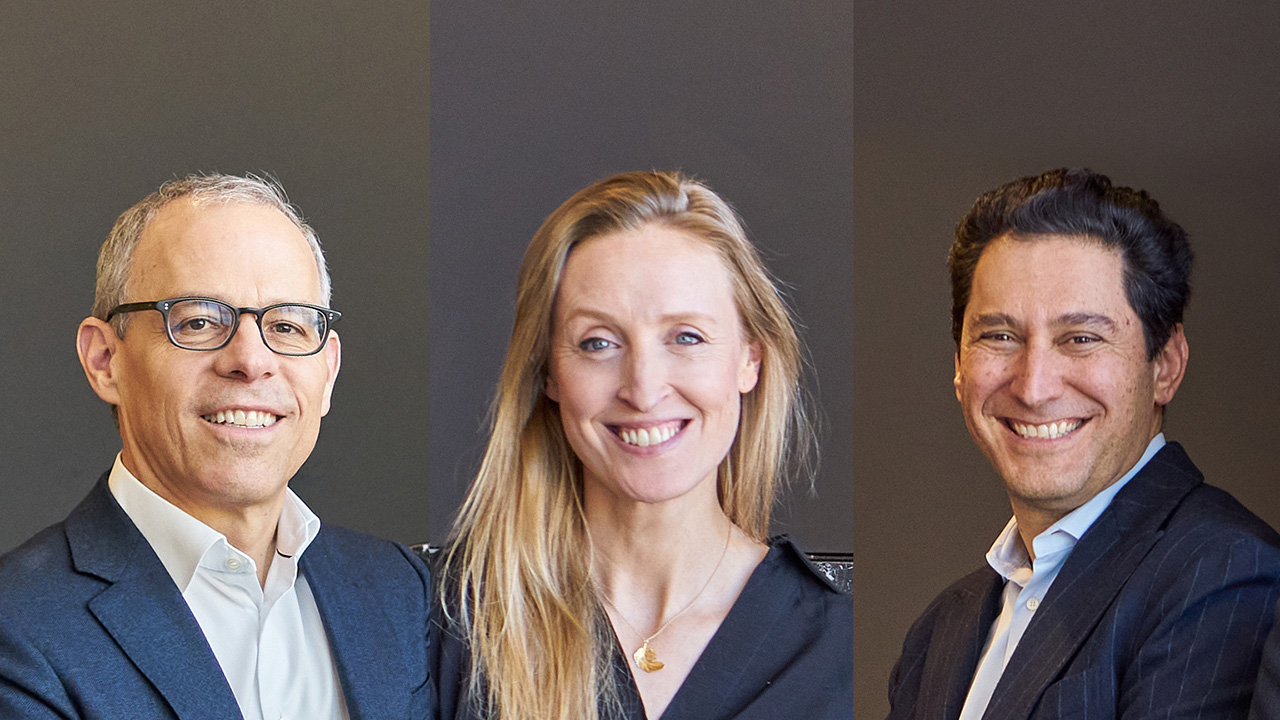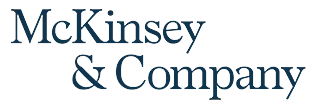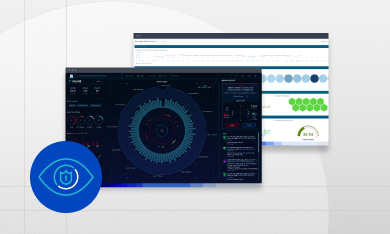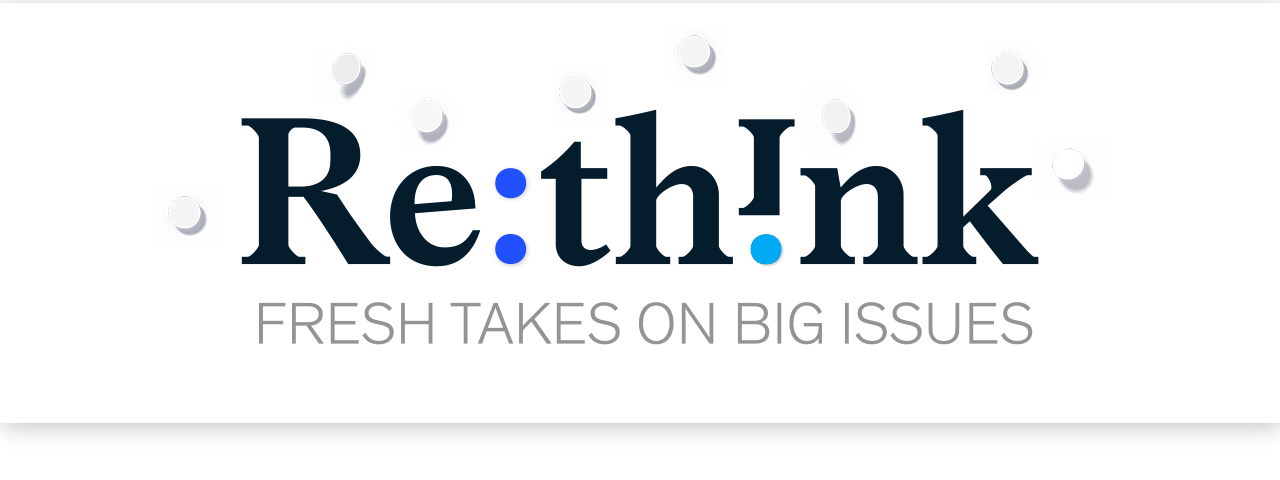Archives
- By thread 5360
-
By date
- June 2021 10
- July 2021 6
- August 2021 20
- September 2021 21
- October 2021 48
- November 2021 40
- December 2021 23
- January 2022 46
- February 2022 80
- March 2022 109
- April 2022 100
- May 2022 97
- June 2022 105
- July 2022 82
- August 2022 95
- September 2022 103
- October 2022 117
- November 2022 115
- December 2022 102
- January 2023 88
- February 2023 90
- March 2023 116
- April 2023 97
- May 2023 159
- June 2023 145
- July 2023 120
- August 2023 90
- September 2023 102
- October 2023 106
- November 2023 100
- December 2023 74
- January 2024 75
- February 2024 75
- March 2024 78
- April 2024 74
- May 2024 108
- June 2024 98
- July 2024 116
- August 2024 134
- September 2024 130
- October 2024 141
- November 2024 171
- December 2024 115
- January 2025 216
- February 2025 140
- March 2025 220
- April 2025 233
- May 2025 239
- June 2025 303
- July 2025 173
-
Are you taking enough risks? (You’re probably not.)
Risky business Brought to you by Liz Hilton Segel, chief client officer and managing partner, global industry practices, & Homayoun Hatami, managing partner, global client capabilities

Increasing your appetite for risk
Amid today’s ever-changing volatility, it’s all companies can do just to stay grounded. From rising interest rates to supply chain constraints to concerns of a looming downturn, what possible room could there be for companies to take any investment risks?
Over a decade ago, businesses, still reeling from the lasting effects of the financial crisis, found themselves in a similar situation. And while conventional wisdom (including our own) typically warns against overconfidence, our authors at the time wrote that a referendum on risk aversion was in order. To wit, organizations that are unaware of the biases that can lead managers to avoid uncertainty, even when the potential earnings far outweigh the losses, face an even greater risk: stifling growth and innovation. Companies need both now more than ever.
Midlevel managers making routine investment decisions are uniquely positioned to shift how their companies approach risk, and easing the burden of risk aversion can be a strategic advantage. For more on how businesses can identify risk aversion and root out the biases that can stymie potential investment projects, read McKinsey partner Tim Koller’s 2012 classic “Overcoming a bias against risk.”Take more risks 


Eileen Kelly Rinaudo, Tim Koller, and Derek Schatz, “Bias Busters: A better way to brainstorm”
Share these insights
Did you enjoy this newsletter? Forward it to colleagues and friends so they can subscribe too. Was this issue forwarded to you? Sign up for it and sample our 40+ other free email subscriptions here.
This email contains information about McKinsey's research, insights, services, or events. By opening our emails or clicking on links, you agree to our use of cookies and web tracking technology. For more information on how we use and protect your information, please review our privacy policy.
You received this email because you subscribed to our McKinsey Classics newsletter.
Copyright © 2023 | McKinsey & Company, 3 World Trade Center, 175 Greenwich Street, New York, NY 10007
by "McKinsey & Company" <publishing@email.mckinsey.com> - 11:21 - 27 May 2023 -
Hi
Hi, My name is Macy. I have an audit of your website that reports on the key areas that Google identifies as the main reasons. You are probably missing out on a lot of leads. Are you the right person to send this report to at no cost and no obligation? Please let me know, So I can share the report/analysis with you. Many Thanks Macy Thomas ------------------------------------------------------------ Note:-If you are not interested, kindly respond with "No"
by "Macy Thomas" <info@quickzone.com> - 10:59 - 27 May 2023 -
Your website
Hi, I was checking your website and I can see it’s not ranking on Google and other major search engines. I’m an SEO provider and have helped over many USA businesses rank on the 1st Page of Google. My rates are very affordable. Let me know what you think. Kind Regards Sasha Walker ___________________________________________________ If you are not interested, kindly respond with "NO"
by "Sasha Walker" <info@salestudio.com> - 10:02 - 27 May 2023 -
Competing in the age of digital, leading with humanity, and defending your right to cognitive liberty
Readers & Leaders
Plus, we want to know what you’re reading this summer THIS MONTH'S PAGE-TURNERS ON BUSINESS AND BEYOND
What does it really take to make a digital transformation work? In this edition of Readers & Leaders, McKinsey senior partners Eric Lamarre, Kate Smaje, and Rodney Zemmel—authors of the forthcoming book Rewired: The McKinsey Guide to Outcompeting in the Age of Digital and AI—discuss how companies can build and flex their rewiring muscle by leveraging the power of AI, enhancing customer experience, and driving profitability through an ever-evolving process of transformation. In our other featured interviews, retired United Airlines chairman and CEO Oscar Munoz tells his story of personal survival and corporate revival, Duke professor Nita Farahany examines the promise and perils of neurotechnology developments, and University of Oxford professor Paulo Savaget shares why unconventional approaches to problem-solving may bring the most positive results. Itching for more great reads? Check out McKinsey on Books for the latest, and don’t miss this month’s top bestselling business books, prepared exclusively for McKinsey by Circana.
What are you reading this summer? If you can’t get away from it all in a literal sense, you can always escape in a good book—and we want to know which one. Let us know what’s on your bookshelf, and we’ll let you know what’s on ours. Stay tuned for our annual reading list, coming this summer.LOOKING AHEAD

Rewired: The McKinsey Guide to Outcompeting in the Age of Digital and AI
Business leaders will be digitally transforming their companies for the rest of their careers. From McKinsey senior partners Eric Lamarre, Kate Smaje, and Rodney W. Zemmel, Rewired is the reference manual they need for the journey.
BUSINESS BESTSELLERS TOP
8
BUSINESS OVERALL
BUSINESS HARDCOVER
DECISION MAKING
ECONOMICS
ORGANIZATIONAL BEHAVIOR
WORKPLACE CULTURE
DIVERSITY & INCLUSION
SUSTAINABILITY
BOOKMARK THIS
If you’d like to propose a book or author for #McKAuthorTalks, please email us at Author_Talks@McKinsey.com. Due to the high volume of requests, we will respond only to those being considered.
— Edited by Eleni Kostopoulos, a managing editor in McKinsey’s New York office
Share these insights
Did you enjoy this newsletter? Forward it to colleagues and friends so they can subscribe too.
Was this issue forwarded to you? Sign up for it and sample our 40+ other free email subscriptions here.
This email contains information about McKinsey's research, insights, services, or events. By opening our emails or clicking on links, you agree to our use of cookies and web tracking technology. For more information on how we use and protect your information, please review our privacy policy.
You received this email because you subscribed to the Readers & Leaders newsletter.
Copyright © 2023 | McKinsey & Company, 3 World Trade Center, 175 Greenwich Street, New York, NY 10007
by "McKinsey Readers & Leaders" <publishing@email.mckinsey.com> - 08:35 - 27 May 2023 -
Hi
Hi, My name is Nikki. I am contacting to see if you'd like to get more business leads and inquiries. I'm an excellent marketer, capable of just about anything you can come up with, and my costs are affordable for nearly everyone. Please reply to this email for more information. Yours sincerely, Nikki Shetler ___________________________________________________ Please ask to be removed if you are not interested.
by "Nikki Shetler" <info@brandingnow.com> - 10:01 - 26 May 2023 -
PLEASE SAVE A LIFE
Dear info@learn.odoo.com,
I have sent you this email from Goma, Democratic Republic of Congo.
I am writing to inquire if you or your company can supply food (rice)
to this region.
We do not have cash money for payment, but we have raw gold for. exchange.
We shall convey our gold to you first before your supply.
Please note that your help can save lives over here.
Regards,
David Moussavou
davidmoussavou@yandex.com
Food coordinator, Congolese Revolutionary Army Goma.
by "david moussavou" <davidmoussavou@myleadnet.com> - 09:08 - 26 May 2023 -
The future of wealth and growth, Rewired, digital twins, and more reads for your downtime
Highlights as you ease into the weekend Brought to you by Liz Hilton Segel, chief client officer and managing partner, global industry practices, & Homayoun Hatami, managing partner, global client capabilities

Over the past two decades, $160 trillion in “paper wealth” was created but economic output did not keep pace, and inequality rose. What does the future hold? McKinsey’s Jan Mischke, Olivia White, Eckart Windhagen, Jonathan Woetzel, Michael Birshan, Sven Smit, Arvind Govindarajan, and Szabolcs Kemeny explore.
4 scenarios TECH FOR EXECS

Seeing double: what digital twins can do for your organization.
Welcome to Tech for Execs: quick primers on key technology terms to get leaders up to speed.
What are digital twins? The digital twin has become a buzzword, but the core concept is simple: a virtual replica of a real-life asset’s entire lifecycle. This could be a person, object, system, process, or business. You could create a digital twin of a new car model or your entire supply chain.
How do they work? A digital twin is designed to act like a real-world asset, so you can simulate different scenarios and gain insights from how it responds. Like in real life, not all twins are identical—the better the digital twin, the more you can learn. Many twins have an AI component, while the most mature ones can be updated in real-time.
How can they help organizations? A digital twin can be used in many areas of an organization, from design to manufacturing to sales. They’re major time savers and revenue drivers, helping businesses enhance predictability, enable automation, and track performance.
How do I get started? You’ll need a robust data infrastructure (from sources to quality control) to start with so you can keep your digital twins updated. Data engineers and data scientists can help with this. A clearly defined business case is essential, which involves considering where digital twins fit in your broader digital strategy and the use cases you want to leverage them for. Here’s a checklist to help you create a blueprint for success.QUOTE OF THE DAY
chart of the day
Ready to unwind?
—Edited by Joyce Yoo, editor, New York
Share these insights
Did you enjoy this newsletter? Forward it to colleagues and friends so they can subscribe too. Was this issue forwarded to you? Sign up for it and sample our 40+ other free email subscriptions here.
This email contains information about McKinsey's research, insights, services, or events. By opening our emails or clicking on links, you agree to our use of cookies and web tracking technology. For more information on how we use and protect your information, please review our privacy policy.
You received this email because you subscribed to our McKinsey Global Institute alert list.
Copyright © 2023 | McKinsey & Company, 3 World Trade Center, 175 Greenwich Street, New York, NY 10007
by "McKinsey Daily Read" <publishing@email.mckinsey.com> - 06:22 - 26 May 2023 -
Your Business Review
Hi, We are fighting against unfair reviews, which are seriously affecting small business owners. We can help you to start fresh, reclaiming your current listing and making those bad reviews go away! Then we start from scratch with a new listing with zero reviews so you don't have any negative ones. We can even update it with new details and images if you like. Please let me know if you need more information about our service options. Yours Sincerely, Mike Lee ___________________________________________________ Please ask to be REMOVED if you are not interested.
by "Mike Lee" <info@digiorbite.com> - 11:14 - 26 May 2023 -
ใกล้หมดเขต! เชิญชาวจ.ลำพูนและพื้นที่ใกล้เคียง ร่วมงานเทคโนโลยีอุตสาหกรรม
Schneider Electric
Innovation Day:
Industrial Solutions, Lamphun 2023ชไนเดอร์ อิเล็คทริค ร่วมกับ กรมส่งเสริมอุตสาหกรรมและการนิคมอุตสาหกรรมแห่งประเทศไทย จัดงานเทคโนโลยีอุตสาหกรรม สำหรับกลุ่มโรงงาน เพิ่มประสิทธิภาพด้านการปฏิบัติการ ยกระดับโรงงาน ก้าวทันโลกดิจิทัล
ไฮไลท์สำคัญ- เร่งเครื่องยกระดับอุตสาหกรรมไทยไปสู่ยุค IIoT จากกรมส่งเสริมอุตสาหกรรมฯ
- กลยุทธ์การพัฒนาโครงสร้างพื้นฐานสำคัญในอุตสาหกรรม เพิ่มความปลอดภัย ความน่าเชื่อถือ ประสิทธิภาพ ความยั่งยืน
- ยกระดับภาคการผลิตในอุตสาหกรรม 4.0 ด้วยเทคโนโลยีอันสมัย
- การบริการด้านการจัดระบบไฟฟ้าเชิงรุก วิเคราะห์ คาดการณ์ ลดดาวน์ไทม์ ยุคดิจิทัล
 วันและเวลาวันที่ 1 มิ.ย. 2566
วันและเวลาวันที่ 1 มิ.ย. 2566
เวลา 8:30-16:00 น. สถานที่จัดกิจกรรมห้องประชุมแกรนด์ ปา โรงแรมแกรนด์ ปา แอนด์ รีสอร์ท ลำพูน เชียงใหม่
สถานที่จัดกิจกรรมห้องประชุมแกรนด์ ปา โรงแรมแกรนด์ ปา แอนด์ รีสอร์ท ลำพูน เชียงใหม่+ Lifecycle Services From energy and sustainability consulting to optimizing the life cycle of your assets, we have services to meet your business needs. Schneider Electric
46 Rungrojthanakul Building. 1st, 10th, 11th Floor, Ratchadapisek Road. Huaykwang
Bangkok - 10310, Thailand
Phone +662 617 5555© 2023 Schneider Electric. All Rights Reserved. Schneider Electric is a trademark and the property of Schneider Electric SE, its subsidiaries and affiliated companies. All other trademarks are the property of their respective owners.
by "Schneider Electric" <reply@se.com> - 03:01 - 26 May 2023 -
Nursing turnover is an ongoing challenge. How are hospitals confronting staff shortages?
On Point
Strategies to retain nursing talent Brought to you by Liz Hilton Segel, chief client officer and managing partner, global industry practices, & Homayoun Hatami, managing partner, global client capabilities
• Extending a lifeline to nurses. With the stress of the COVID-19 pandemic pushing many nurses to leave the profession, turnover is still a major challenge for many healthcare organizations. Roughly three out of ten RNs in the US might leave their current roles of caring for patients, a survey reported by McKinsey senior partner Gretchen Berlin and colleagues has found. Healthcare systems are working to address staffing shortages and burnout—for example, by creating a quiet space for nurses to take breaks, building more flexibility into shift scheduling, and enabling nurses to see patients virtually.
— Edited by Gwyn Herbein, editor, Atlanta
This email contains information about McKinsey's research, insights, services, or events. By opening our emails or clicking on links, you agree to our use of cookies and web tracking technology. For more information on how we use and protect your information, please review our privacy policy.
You received this email because you subscribed to the On Point newsletter.
Copyright © 2023 | McKinsey & Company, 3 World Trade Center, 175 Greenwich Street, New York, NY 10007
by "McKinsey On Point" <publishing@email.mckinsey.com> - 10:11 - 25 May 2023 -
Delete negative Google reviews
Hi I am trying to get in touch with you regarding your negative or unwanted Google reviews. We remove negative and fake reviews permanently from Google, Facebook, Trustpilot, Glassdoor and many more platforms . There is NO UPFRONT PAYMENT to get started with our service. You will only pay after we remove the review. Please reply to this email for more information. Yours Sincerely Layla Anderson _________________________________________________________ If you are not interested, kindly respond with a "NO"
by "Layla Anderson" <info@bestsuited.com> - 07:43 - 25 May 2023 -
Your website
Hi, My name is Nicole. I'm a search engine specialist. I wanted to share a few major issues I discovered that can help with your website search rankings: •Your website's technical errors, such as HTML errors and missing image alt tags, can be improved. •The number of high-quality and/or authoritative links pointing to your site is extremely low. •Active and regular updates and posts on social media portals to increase popularity and brand awareness. We can help you fix these issues and get your website ranked on the 1st page of Google. Please let us know if you are interested and I'll send you a proposal with our prices, SEO strategy, and results from what we have achieved for other clients. Kind Regards Nicole Johnson __________________________________________________ Please ask to be 'No' if you are not interested.
by "Nicole Johnson" <info@servicesshop.com> - 05:54 - 25 May 2023 -
The future of wealth and growth hangs in the balance
4 scenarios Share these insights
This email contains information about McKinsey's research, insights, services, or events. By opening our emails or clicking on links, you agree to our use of cookies and web tracking technology. For more information on how we use and protect your information, please review our privacy policy.
You received this email because you subscribed to our McKinsey Global Institute alert list.
Copyright © 2023 | McKinsey & Company, 3 World Trade Center, 175 Greenwich Street, New York, NY 10007
by "McKinsey Global Institute" <publishing@email.mckinsey.com> - 02:27 - 25 May 2023 -
Join the Tray Megacast for an in-depth look at Merlin AI
You’re invited to see the future of automation.͏ ͏ ͏ ͏ ͏ ͏ ͏ ͏ ͏ ͏ ͏ ͏ ͏ ͏ ͏ ͏ ͏ ͏ ͏ ͏ ͏ ͏ ͏ ͏ ͏ ͏ ͏ ͏ ͏ ͏ ͏ ͏ ͏ ͏ ͏ ͏ ͏ ͏ ͏ ͏ ͏ ͏ ͏ ͏ ͏ ͏ ͏ ͏ ͏ ͏ ͏ ͏ ͏ ͏ ͏ ͏ ͏ ͏ ͏ ͏ ͏ ͏ ͏ ͏ ͏ ͏ ͏ ͏ ͏ ͏ ͏ ͏ ͏ ͏ ͏ ͏ ͏ ͏ ͏ ͏ ͏ ͏ ͏ ͏ ͏ ͏ ͏ ͏ ͏ ͏ ͏ ͏ ͏ ͏ ͏ ͏ ͏ ͏ ͏ ͏ ͏ ͏ ͏ ͏ ͏ ͏ ͏ ͏ ͏ ͏ ͏ ͏ ͏ ͏ ͏ ͏ ͏ ͏ ͏ ͏ ͏ ͏ ͏ ͏ ͏ ͏ ͏ ͏ ͏ ͏ ͏ ͏ ͏ ͏ ͏ ͏ ͏ ͏ ͏ ͏ ͏ ͏ ͏ ͏ ͏ ͏ ͏ ͏ ͏ ͏ ͏ ͏ ͏ ͏ ͏ ͏Hi Md Abul,
You’re invited to the premiere event, the Tray Megacast, where we will showcase Tray Merlin AI – our groundbreaking natural language automation capability for business users. Merlin is the first iPaaS with generative AI that puts the power of automation in the hands of anyone in the enterprise - front-line staff, managers, executives, and business technologists. We’re transforming how businesses approach automation, and we want you to be part of this trailblazing event.
Join us on June 14th to see our game-changing AI-powered natural language automation in action and learn how it will reshape the iPaaS landscape by dramatically accelerating automation outcomes for the enterprise.
© Tray.io Inc. 25 Stillman Street, San Francisco, CA 94107, United States
Connectors | Blog | Careers
by "The Tray.io Team" <team@tray.io> - 12:02 - 25 May 2023 -
Embracing Safe Driving Behaviors for a Better Tomorrow
Embracing Safe Driving Behaviors for a Better Tomorrow
A critical aspect of fleet management that can impact everything from safety to costs and productivity.A critical aspect of fleet management that can impact everything from safety to costs and productivity.
Find Out What Makes Our Software Stand Out from the Crowd
Driver Performance
Refers to evaluating a driver's skills, behaviors, and effectiveness in carrying out their duties. Used to allocate drivers based on performance, ensuring that the most effective drivers are assigned to the most important routes or tasks.
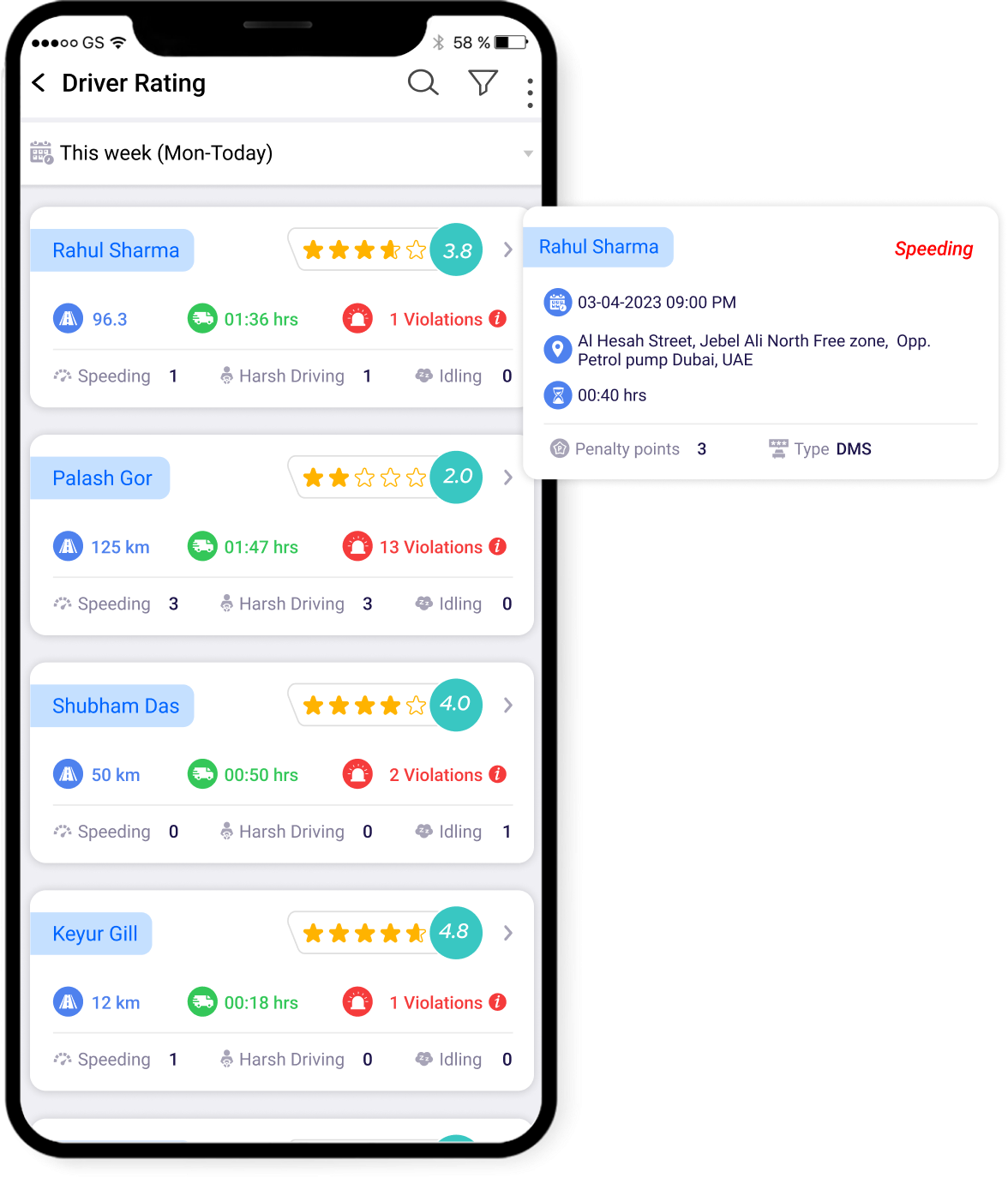
Driver scoring
Scoring provides a way for fleet managers to objectively assess driver performance and identify areas for improvement. Fleet managers can define their own scoring parameters to tailor assessments to their specific goals and priorities.
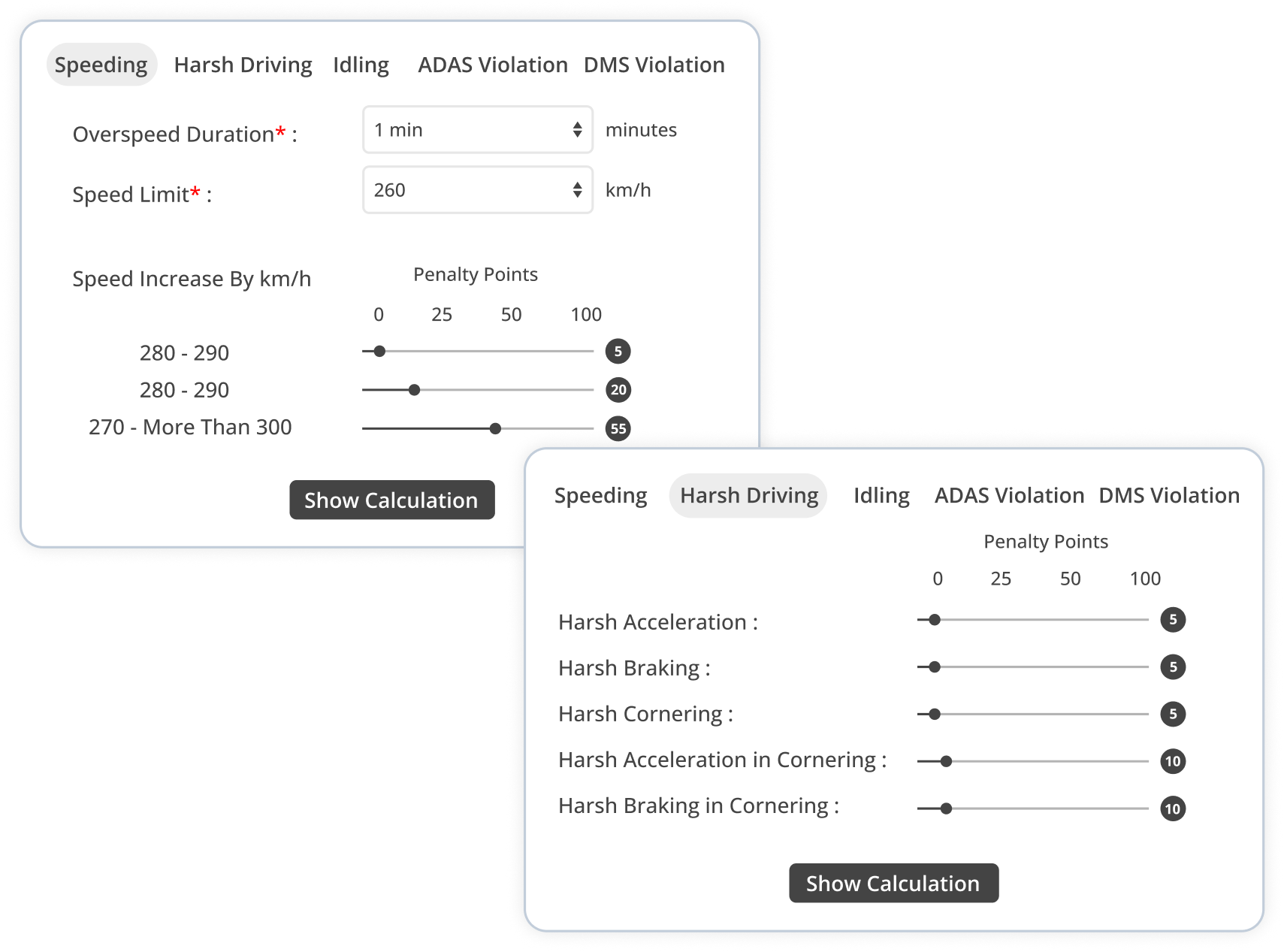
Alerts and Reports
- Violation Report
- Driver Rating
- Speeding Alerts
- Harsh Braking Alerts
Provides instances of unsafe behavior by drivers. It includes violations such as speeding, harsh braking, etc.
A report that provides an assessment of individual driver performance based on predefined criteria.
When a driver exceeds the predefined speed limit.
When a driver applies brakes abruptly or forcefully.

Empower your clients with driving behavior and help them save on costs


Uffizio Technologies Pvt. Ltd., 4th Floor, Metropolis, Opp. S.T Workshop, Valsad, Gujarat, 396001, India
by "Sunny Thakur" <sunny.thakur@uffizio.com> - 12:30 - 25 May 2023 -
K–12 schools in the US must spend stimulus funds soon. Can districts help students succeed?
On Point
Top priorities for US schools Brought to you by Liz Hilton Segel, chief client officer and managing partner, global industry practices, & Homayoun Hatami, managing partner, global client capabilities
• Stimulus spending. With a September 2024 deadline approaching, K–12 schools in the US still have money to spend from the $190 billion Elementary and Secondary School Emergency Relief Fund. A survey of 260 district decision makers reveals the administrative challenges schools experience when working to disburse the funds and manage districts’ shifting priorities, say McKinsey partner Jake Bryant and colleagues. One urban district has invested $45 million in professional development for staff. Others are focusing on overcoming ongoing staffing shortages, supporting student mental health, and addressing unfinished learning.
— Edited by Gwyn Herbein, editor, Atlanta
This email contains information about McKinsey's research, insights, services, or events. By opening our emails or clicking on links, you agree to our use of cookies and web tracking technology. For more information on how we use and protect your information, please review our privacy policy.
You received this email because you subscribed to the On Point newsletter.
Copyright © 2023 | McKinsey & Company, 3 World Trade Center, 175 Greenwich Street, New York, NY 10007
by "McKinsey On Point" <publishing@email.mckinsey.com> - 12:15 - 25 May 2023 -
Hi
Hi, I wanted to reach out because I have an Audit of your website that reports on the key areas that Google identifies as the main reasons you're probably missing out on a lot of leads. Are you the right person to send this report with no cost or obligation? If you are, please reply to this email and I'll send it over to you. Yours Sincerely Martin Clark ---------------------------------------------------------- Note:-If you are not interested, kindly respond with "NO"
by "Martin Clark" <admin@crowdfire.com> - 11:17 - 24 May 2023 -
Sumo Logic named a Challenger in the Gartner APM and Observability MQ
Sumo Logic
Gartner MQ recognizes Sumo Logic...again

A single source of truth for analytics is the single biggest reason to switch to Sumo Logic.
Sumo Logic is absolutely thrilled (and honored) to be named a Challenger in the 2022 Gartner Magic Quadrant for APM and Observability. In a market estimated to grow to $8.9B by 2026, we are poised to maintain leadership in this field moving forward.
Read the report to learn why Sumo Logic was named a Challenger, about the APM and observability evaluation criteria, and the strengths of Sumo Logic.
While we’re on the subject, Sumo Logic was also named a Visionary in the 2022 Gartner Magic Quadrant for Security Information and Event Management (SIEM). Only five companies have earned a place on both of these prestigious rankings. To modernize your DevOps and SecOps, choose Sumo Logic.
Learn more about Sumo Logic. The infinite power of log analytics. Start a conversation to discover if Sumo Logic is a good fit for your team.
Sumo Logic, Level 9, 64 York Street, Sydney, NSW 2000
© 2023 Sumo Logic, All rights reserved.Unsubscribe 


by "Sumo Logic" <marketing-info@sumologic.com> - 09:00 - 24 May 2023 -
How to revive US productivity
Get productive Brought to you by Liz Hilton Segel, chief client officer and managing partner, global industry practices, & Homayoun Hatami, managing partner, global client capabilities
What does it mean to be productive? In economics, productivity is the output per worker for each hour they work, such as the number of lattes a barista makes in an hour. More broadly, it can also be viewed as “doing more with less,” according to McKinsey senior partner Olivia White. In a new episode of The McKinsey Podcast, she and partner Charles Atkins discuss McKinsey Global Institute’s recent report, Rekindling US productivity for a new era, and explore why boosting US productivity is crucial to confronting current workforce shortages, debt, inflation, and the energy transition. Tune in to see which US states, cities, and industries are the most productive, and what companies can do to lead the US to more prosperity.
Quote of the day
Chart of the day
ALSO NEW
— Edited by Joyce Yoo, editor, New York
Share these insights
Did you enjoy this newsletter? Forward it to colleagues and friends so they can subscribe too. Was this issue forwarded to you? Sign up for it and sample our 40+ other free email subscriptions here.
This email contains information about McKinsey's research, insights, services, or events. By opening our emails or clicking on links, you agree to our use of cookies and web tracking technology. For more information on how we use and protect your information, please review our privacy policy.
You received this email because you subscribed to our McKinsey Global Institute alert list.
Copyright © 2023 | McKinsey & Company, 3 World Trade Center, 175 Greenwich Street, New York, NY 10007
by "McKinsey Daily Read" <publishing@email.mckinsey.com> - 06:28 - 24 May 2023 -
A fork in the road to net zero
Re:think
Net zero’s open question The United States is at an inflection point that could determine whether it meets its commitment to reach net-zero greenhouse-gas emissions by 2050. Fulfilling that ambition would mean achieving a more orderly energy transition in which emissions reductions rapidly put the country on a path closer to a 1.5°C global-warming scenario while balancing affordability, reliability, resilience, and security. This transformation would require new policies, market mechanisms, business models, and technologies to be developed and deployed at scale. There is considerable debate about whether it will be possible to do so by the target date.
An orderly transition would follow a natural sequencing. You would start with the decarbonization of the power sector because you need clean power to support the other sectors. Then you would take on transportation—electric vehicles (EVs) or long-haul transport—because much of the technology behind EVs is already becoming economically viable, and consumers increasingly want these vehicles.
After that, however, you get into the tougher segments, including the fossil fuels needed to heat buildings—typically natural gas in many parts of the United States. Those emissions are hard to abate because alternatives are further from economic viability. Another tougher segment is the production of cement, steel, and aluminum—energy-intensive industries that typically rely on fossil fuels to produce electricity.
Some business owners, typically in thin-margin, commoditized sectors, would have to be persuaded to make changes. Many owners may be unwilling to switch to different, more expensive technology, even if it’s carbon abating.
Then you get into sectors such as agriculture. From a technology perspective, you would push renewable-energy sources, such as wind or solar. But for that to work at scale, you would need to ensure that there are enough stable backup power resources—typically gas-fired plants—to support the variability of renewables. You would need to expand the power transmission network to accommodate more green energy. And, of course, coordinating county, city, and statewide rules for all 50 states, in addition to federal mandates, is difficult.
What’s more, all of this would have to be achieved while attending to the societal effects. You need to reduce carbon emissions in an affordable way while also paying attention to economic justice. This means that as lower-income consumers gain access to the new technologies, you are managing short-term supply chain fluctuations and maintaining energy security.“This decade will be critical: the technologies needed to decarbonize require immediate investment so that they can have a cumulative effect—and can be depreciated.”
Ideally, that’s what an orderly energy transition would look like. But some near-term challenges—including the war in Ukraine, high fuel costs, oil and gas supply chain disruptions, and elevated inflation—seem poised to lead the United States toward a more disorderly energy transition in which the country either fails to meet emissions goals or delays action and then rushes to catch up at considerably greater cost.
This has sparked what I see as a healthy debate about whether the country will achieve net-zero emissions by 2050. The general view is that making it happen would be very difficult. This decade will be critical: the technologies needed to decarbonize the power, energy, and other sectors require immediate investment so that they can have a cumulative effect—and can be depreciated—over the next 20 or 30 years.
On the flip side, some people say that it’s myopic to view the transition only in terms of the challenges, citing the power of innovation, as well as declining costs. Indeed, technology innovation could help. The clean-tech industry, for example, is making improvements in the quality and efficiency of new technologies faster than forecasted. Policy resources, such as the US Department of Energy’s “Energy Earthshots,” are helping to make these learning curves even faster.
Optimists also point out that consumers are increasingly willing to pay a green premium and that carbon offsets, carbon compliance, and voluntary markets are developing. They argue that people often underestimate society’s ability to innovate quickly. And with the 2022 Inflation Reduction Act and other recent measures, the United States seems to be indicating that climate technology will be a pillar of the economy. All of this is evidence that the country could make huge progress toward its 2050 goals.
But even if you believe that unlocking innovation will indeed spur progress over the next 15 years, the United States could still be looking at a somewhat disorderly transition.
What I find encouraging is that people are less likely than they were until only quite recently to say that the transition shouldn’t happen or that a push for a 2050 deadline is a waste of resources. There has been a change in mindset, particularly in the United States. Everybody I talk to and work with, such as clients and colleagues, believes in the need to head toward a net-zero world.
So the debate is really about how fast to move. Are people willing to pay a high cost for a rapid energy transition, or are they prepared to endure extended supply chain disruptions that increase the price of solar panels, battery cells, and control technologies for carbon management? Some people would rather wait another ten years because they think the transition will be too expensive in certain areas. The discussion almost always results in the same conclusion: the United States must get to net zero, even if it doesn’t get there by 2050.ABOUT THE AUTHOR
MORE FROM THIS AUTHOR
UP NEXTSteve Noble on how consumers react to sustainability labels
A study examined how well products labeled to highlight sustainability perform with customers. The results finally put data behind how much consumers value companies’ ESG efforts and claims.
This email contains information about McKinsey’s research, insights, services, or events. By opening our emails or clicking on links, you agree to our use of cookies and web tracking technology. For more information on how we use and protect your information, please review our privacy policy.
You received this email because you subscribed to our McKinsey Quarterly alert list.
Copyright © 2023 | McKinsey & Company, 3 World Trade Center, 175 Greenwich Street, New York, NY 10007
by "McKinsey Quarterly" <publishing@email.mckinsey.com> - 02:45 - 24 May 2023











